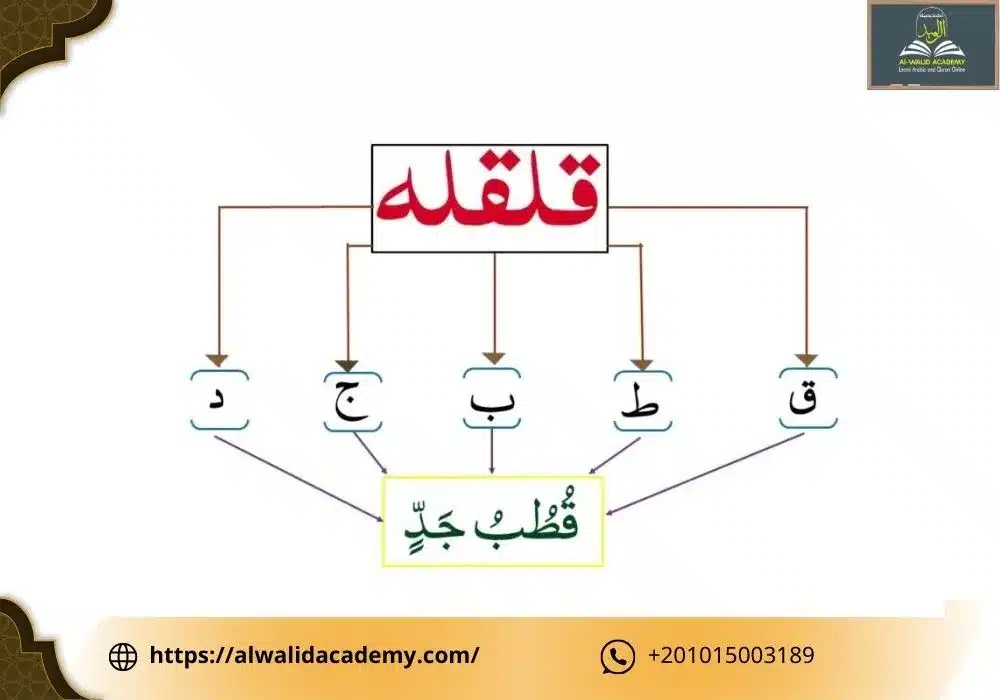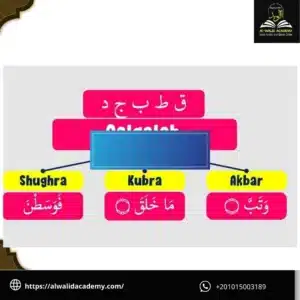Have you ever wondered how the beauty of the Quran’s recitation has been preserved for generations?
The Quran revealed in eloquent Arabic, is safeguarded through Tajweed rules that ensure precision and clarity in pronunciation. Among these rules is Qalqalah, a unique echo-like sound that enhances the clarity of certain letters, especially when they are in a state of Sukoon ( ْ ). But what is Qalqalah in English? It is the technique that prevents letters from blending, ensuring a distinct and harmonious recitation of the Quran.
What is Qalqalah in English?
Qalqalah is a fundamental principle in the science of Tajweed, which governs the precise and beautiful recitation of the Quran. Linguistically derived from the Arabic word “قَلْقَلَة,” meaning “shaking” or “disturbance,” Qalqalah refers to the echoing or bouncing sound produced when certain letters are pronounced with Sukoon (stillness). This unique articulation ensures clarity and prevents confusion between similar-sounding letters, maintaining the integrity of the Quranic text.
After understanding what Qalqalah in English is, let’s move on to exploring the specific letters of Qalqalah and how they affect Quranic recitation.
What is the meaning of Haroof e Qalqalah?
Qalqalah is a unique pronunciation technique used in Tajweed that involves a bouncing or echo sound. This sound occurs when certain letters are pronounced with a sukoon (a sign of no vowel sound), creating a distinct vibration in the pronunciation.
What Are the Letters of Qalqalah = Huruf Qalqalah?
There are five letters in Arabic that carry the quality of Qalqalah, which are:
- ق (Qaaf)
- ط (Taa)
- ب (Baa)
- ج (Jeem)
- د (Daal)
A simple way to remember these letters is by using the phrase قُطُب جَد (Qutb Jad). When these letters appear with a sukoon, they produce a “shaking” effect in their sound, known as Qalqalah. This effect is especially significant when the letters appear at the end of a word or when a stop (waqf) is made, as they are pronounced with a distinct echo or vibration.
Qalqalah ensures that these letters do not blend with other sounds around them, making them clearly distinct. However, when these letters have a vowel (like Fatha, Damma, or Kasra), they are pronounced normally, without the bouncing or echo effect.
The application of Qalqalah helps preserve the precision and beauty of Quranic recitation. Mastering it is essential for anyone who wishes to recite the Quran with clarity and in accordance with the rules of Tajweed.
Rules of Qalqalah: When should you apply Qalqalah?
There are a few key rules to follow to correctly implement Qalqalah in Tajweed. These are the key conditions for a letter to produce the Qalqalah sound:
- Qalqalah Letters
The first condition is that the letter must be one of the five specific Qalqalah letters: ق (Qaaf), ط (Taa), ب (Baa), ج (Jeem), or د (Daal). Only these letters produce the Qalqalah effect when the proper conditions are met.
- Sukoon Requirement
The Qalqalah letter must be Sakin, meaning it has a Sukoon (a sign of no vowel sound). This occurs when the letter is in the middle or at the end of a word. If the Qalqalah letter has a vowel sign (like Fatha, Kasra, Dummah, or Tanween), it does not create the echoing sound and is pronounced normally.
- Position in Recitation
The position of the Qalqalah letter in a word influences how the Qalqalah sound is produced. A stronger echo, called Qalqalah Kubra, occurs when the letter is at the end of a word, especially during a stop. A lighter echo, or Qalqalah Sughra, happens when the letter is within the word. Understanding these distinctions enhances the beauty and clarity of the recitation.
Read about: How to Byheart Quran Easily
Types And Levels of Qalqalah in Tajweed
Qalqalah refers to the distinct sound produced when certain letters in the Arabic language are pronounced under specific conditions. These sounds vary in strength, and there are three different levels of Qalqalah. Let’s explain them:
1-Strong Qalqalah Kubra (قلقلة كبرى)
This type occurs when a letter from the Qalqalah letters appears at the end of the verse and carries Shaddah (a doubling of the letter). When reaching this letter, the last vowel sound is dropped, and the letter is pronounced with a strong echo. The sound is powerful and distinct when pausing at the end of the verse.
2-Medium or Intermediate Qalqalah
This level of Qalqalah happens when a Qalqalah letter appears at the end of the word without Shaddah. The resulting sound is less intense than the strong Qalqalah but still carries a noticeable echo. The sound is of medium strength and maintains a flexible quality.
3-Weak Qalqalah Sughra (قلقلة صغرى)
This is the weakest form of Qalqalah and occurs when a Qalqalah letter appears in the middle of the word and carries Sukoon (no vowel). Here, the letter produces a very light echo because the reader quickly moves to the next letter without pausing. The sound is faint and almost imperceptible, not disrupting the flow of recitation.
In summary, Qalqalah varies in intensity depending on the context and position of the letters. Strong Qalqalah (Qalqalah Kubra) is characterized by pauses and Shaddah, while Medium Qalqalah is noticeable at the end of the word without Shaddah, and Weak Qalqalah occurs in the middle of the word with a quick transition to the next letter.
How Do You Pronounce Qalqala?
When a Qalqalah letter carries a sukoon or appears at the end of a word, it should be pronounced with a gentle, distinct echo or “bounce” in sound. It’s important to avoid overemphasizing the letter, but rather allow the sound to softly vibrate, creating an echo-like effect.
Here are some examples to help clarify how Qalqalah works:
- ب (Ba):
Example: إبراهيم (Ibrahim)
In this case, when the letter ب appears with a sukoon at the end of the word, it produces a light echo as the sound bounces back. The pronunciation would be: “Ib-ra-heem.”
- ق (Qaf):
Example: الحق (Al-Haqq)
When stopping at the end of this word, the letter ق creates a bouncing sound. The pronunciation becomes: “Al-Haqq.”
- ط (Ta):
Example: محيط (Muheet)
At the end of the word, the letter ط echoes softly, producing a bounce in sound. The pronunciation is: “Muheet.”
- ج (Jeem):
Example: الفجر (Al-Fajr)
When you reach the end of this word, the letter ج creates a slight Qalqalah sound: “Al-Fajr.”
- د (Dal):
Example: أحد (Ahad)
At the end of this word, the letter د also carries a noticeable Qalqalah echo: “Ahad.”
You can read about: Where to Stop and Continue in Quran
Qalqalah Examples from the Quran
Reciters can improve their recitation skills by familiarizing themselves with the examples of Qalqalah letters found in the Qur’an. One notable example is in Surah Al-Ikhlas (112:1), where the verse “قُلْ هُوَ اللَّهُ أَحَدٌ” translates to “Say, He is Allah, the One.” In this verse, the letter “ق” in “قُلْ” is recited with Qalqalah Sughra, producing a subtle bounce.
Another example is found in Surah Al-Masad (111:1) with the verse “تَبَّتْ يَدَا أَبِي لَهَبٍ وَتَبَّ,” which translates to “May the hands of Abu Lahab perish, and may he perish.” Here, the letter “ب” in “وَتَبَّ” is pronounced with Qalqalah Akbar, as it appears at the end of the verse, emphasizing the distinct echoing sound.
And you can learn more about Qalqalah when you learn the Quranic Arabic Course
Common Pitfall Related to Qalqalah in Tajweed
Understanding Qalqalah is key to correct Quranic recitation, but many reciters make common mistakes that affect their pronunciation. Here are some of the most frequent errors:
1-Applying Qalqalah to Non-Qalqalah Letters
A common mistake is mistakenly applying the Qalqalah effect to letters that aren’t part of the Qalqalah group, like the letter Laam in “ٱل”. Since Laam isn’t a Qalqalah letter, it shouldn’t produce a bouncing sound.
2-Insufficient Emphasis on Qalqalah Letters
Another error is not emphasizing Qalqalah letters enough, especially at the end of words or verses. The letters need a clear echo to maintain the intended clarity in recitation, especially in Qalqalah Kubra (strong echo).
3-Inconsistent Qalqalah Levels
Some reciters mix up the intensity of Qalqalah, either making it too strong or too weak. For example, Qalqalah Kubra requires a stronger bounce at the end of a verse, while Qalqalah Sughra should be lighter within the word. Consistency is important for proper Tajweed.
By avoiding these mistakes, reciters can improve their Qalqalah and achieve clearer, more accurate recitations.
Read about the rule of Noon and Meem Mushaddadah
Learn More about Tajweed with Us!
At Al-Walid Academy, we are pleased to offer our Tajweed Course, allowing you to begin a rewarding journey of learning the proper recitation of the Holy Quran. Learn effective Tajweed techniques, understand the meanings of the verses, and deepen your connection with the Quran, all from the comfort of your home.
Our Quran Memorizing Course and Tajweed courses are designed for learners of all ages and backgrounds. Whether you aim to improve your Quran recitation, learn Tajweed, or explore Tafseer, Al-Walid Academy offers a course tailored to your individual needs.
Conclusion
In conclusion, understanding what is Qalqalah in English and its rules is key to perfecting your Quran recitation. Whether it’s learning what is qalqalah in English or mastering the Huruf Qalqalah, knowing the different types and levels, like Qalqalah Kubra, Wusta, and Sughra, will improve your reading. With practice and the right guidance, you can improve your Tajweed skills.
Learn Arabic and Quran online with us to elevate your Quranic recitation and perfect your Tajweed.
FAQ
What are the Qalqalah words in Arabic?
The Qalqalah letters consist of five letters: “ق, ط, ب, ج, د”. These can be easily memorized by using the sentence: “قُطُبَ جَدّ”.
What is the reason for Qalqalah?
By mastering Qalqalah, a Tajweed student improve their recitation, ensuring a more fluent and accurate reading of the Quran. The purpose of Qalqalah is to emphasize and clarify the sound of the letter, especially when it appears at the end of a word.


